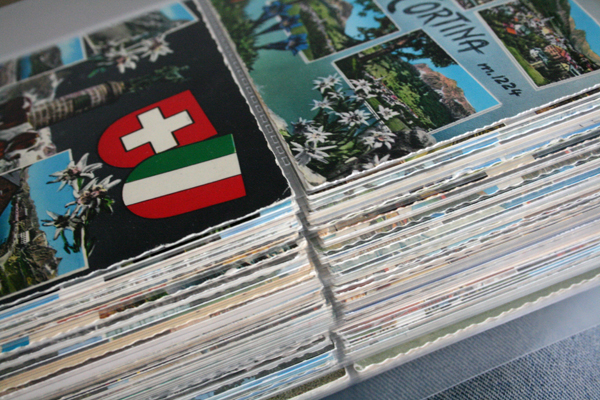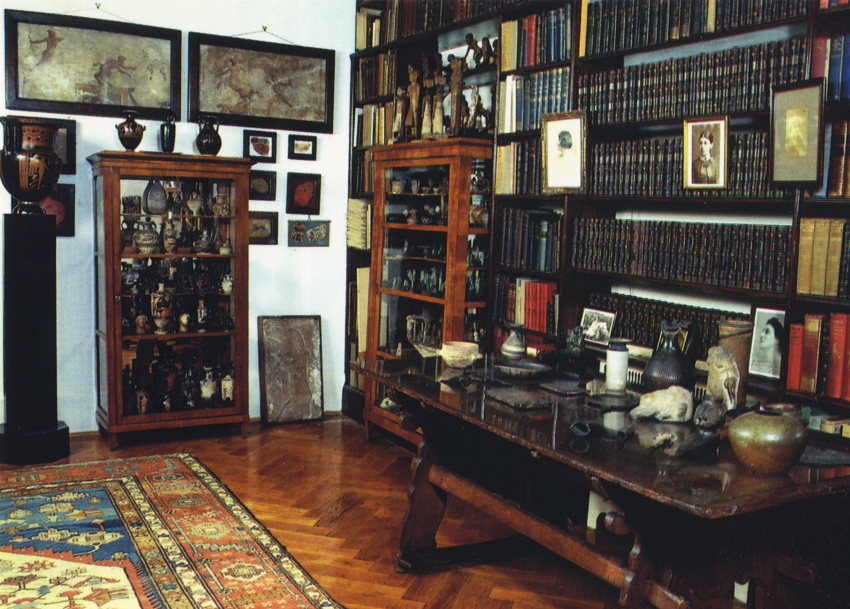A not very well thought out or written account of an interview. Big thanks tovery much Tony: I went to interview the educater, artist and collector Tony Hayward, among his collections that he mentioned there was: his Indian Collection- rat traps, kerosene lamps, moving toys, jugs- postcards of swiss alpine hotels, shampoo bottle tops, viewmaster slideshows, pepsi branded objects, figurines, Paul Emil paintings, flipbooks, and books about collections.
All of which seemed to be linked to his work either by being a resource to use later in his work, or as reference for his work. He talked about the spirit of the hand crafted batch produced Indian objects: 'surrounding myself with the spirit of something'. Some of his collections have become pieces of work in their own right rather than the physical material or inspiration for an artwork, the display process of his collections seems to be important despite claiming that the hunt was where the pleasure was derived from- I think this is more a result from being an artist and displaying being an intrinsic part of the process of that.
Tony also produces quite alot of books it seems- mostly containing his collections. There was one which was just nine images or so of chairs in India, these objects were recorded through photography alone, and then later published in a book. Even this seemingly insignificant collection was worthy of printing- He talked about how making books about the collections kept them going, and how he liked the 'thingyness of books' and contrasted these with websites and other display methods- I think this is nice in terms of turning a memory or record back into an object. Also the sharing and public display aspects of this is interesting- it turns a collection of objects into a piece of work, and again I think this is due to the artists need to exhibit and share.
Other things of interest: Tony described Deptford market as having strata, and how you could be opening boxes and a hit a seam of postcards that stop you in your tracks. Artifacts purchased for the Pitt Rivers being an outpost of the main collection. 'I don't really put things on display, I store them'- the collection as a bank/ store room for the collection- not living with it but visiting it. 'It's terrible I don't really look at this stuff'. 









 I conducted an interview with an avid transport collector at the weekend. His main interest was in taking slides of steam trains. For this hobby he travelled all over the world with friends and alone to acquire images. After 40 years of collecting he speculated that there were approximately 15-20 thousand images in his collection. He spoke about how slides were his preferred medium as they allowed for simultaneously display within the social group of the trainspotter. He meets up with 4 friends every year and each displays the slides taken 30 years ago and also those taken last year. He spoke about how in the desired image for the collection was one of combined quality between locomotion and location. In pursuit of new acquisitions he was arrested twice in communist East Germany (when the Berlin Wall was still up). On trying to rationalise the Why? of the collection he spoke about wanting to capture the memory of an experience and then to be able to share this. This memory of an experience led to comfort and satisfaction and he talked about the pleasure derived from a tangible record.
My Conclusions:
I conducted an interview with an avid transport collector at the weekend. His main interest was in taking slides of steam trains. For this hobby he travelled all over the world with friends and alone to acquire images. After 40 years of collecting he speculated that there were approximately 15-20 thousand images in his collection. He spoke about how slides were his preferred medium as they allowed for simultaneously display within the social group of the trainspotter. He meets up with 4 friends every year and each displays the slides taken 30 years ago and also those taken last year. He spoke about how in the desired image for the collection was one of combined quality between locomotion and location. In pursuit of new acquisitions he was arrested twice in communist East Germany (when the Berlin Wall was still up). On trying to rationalise the Why? of the collection he spoke about wanting to capture the memory of an experience and then to be able to share this. This memory of an experience led to comfort and satisfaction and he talked about the pleasure derived from a tangible record.
My Conclusions:



